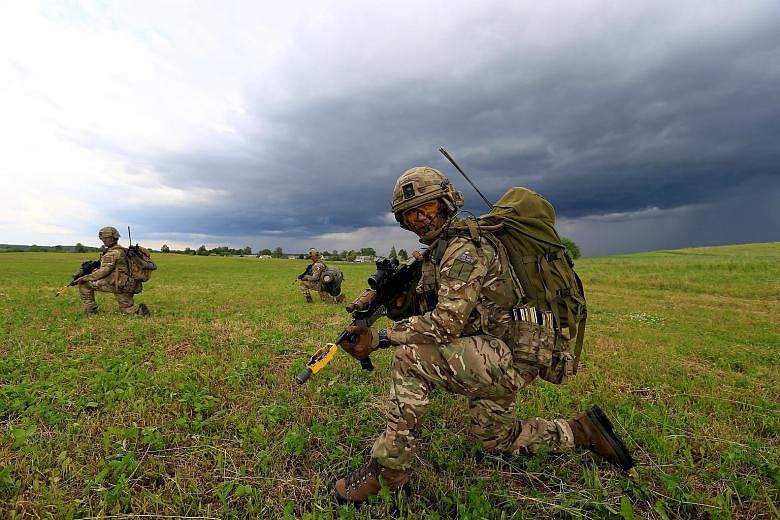SUWALKI GAP (Polish-Lithuanian border) • United States and British troops have carried out the first large-scale Nato defensive drill on the border between Poland and Lithuania, rehearsing for a possible scenario in which Russia might try to sever the Baltic states from the rest of the Western alliance.
The frontier runs for 104km through farmland, woods and low hills in an area known as the Suwalki Gap.
If seized by Russia, it would cut off Estonia, Latvia and Lithuania.
The commander of US troops in Europe said last Friday that Washington was concerned about possible Russian incursions along Nato's Baltic borders during large Russian military exercises in September and would send more troops to the area.
"The gap is vulnerable because of the geography. It's not inevitable that there's going to be an attack, of course, but... if that is closed, then you have three allies that are north that are potentially isolated from the rest of the alliance," US Lieutenant-General Ben Hodges said.
Russia denies any plans to invade the Baltics, and says it is Nato that is threatening stability in eastern Europe by building up its military presence there and staging such war games.
But Lt-Gen Hodges, who commands US forces in Europe, said it was crucial for the alliance to show it was ready. "We have to practise, we have to demonstrate that we can support allies in keeping (the Gap) open, in maintaining that connection," he said.
Russia's 2014 annexation of Ukraine's Crimea peninsula in the Black Sea has changed Nato's calculations, seeing Russia increasingly as an adversary.
Before then, no forces from other alliance members were stationed in the Baltic states. Now, four battle groups, totalling just over 4,500 troops from Britain, Canada, Germany and the US, have been deployed in Estonia, Latvia, Lithuania and Poland.
The Poles have been pushing other Nato allies to use some of these troops to secure the vulnerable Suwalki corridor and deter potential Russian aggression.
But while 1,500 troops took part in last weekend's exercises, a Lithuanian commander cautioned that it would take more to defend the gap in the event of a genuine conflict.
"This is only a small-scale drill compared with what would be needed in case of a real attack, but it is important for us because it shows that allies share our worries", said Brigadier-General Valdemaras Rupsys, head of Lithuania's land forces.
Simulating a covert insertion of forces, three American helicopters landed in a field in rural Lithuania last Saturday, several hours' drive from where a US battalion is stationed at Orzysz base in Poland.
"The training helps present a credible defence force that hopefully will deter aggression, but if not, we'll be prepared to move to defend the borders of Nato," said Lieutenant-Colonel Steven Gventer, who leads the US battle group in Orzysz.
Nato officials believe Moscow will hold its own exercise in Russia and Belarus on a much greater scale in September, possibly involving 100,000 troops, under the code name "Zapad" (West).
Baltic officials believe Moscow will also rehearse an attack on the Suwalki Gap during Zapad.
REUTERS

